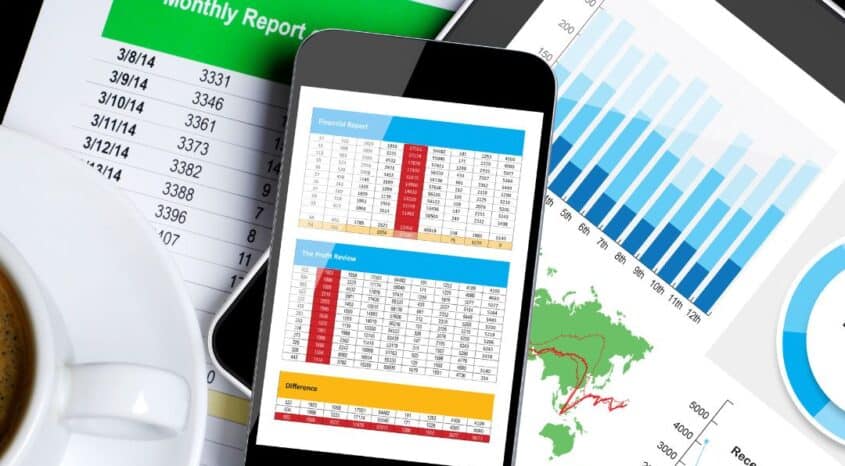If 2020 was the year the pandemic turned retail on its head, 2021 was the year when most retailers settled into surviving and thriving in a new normal.
But with the initial shock and disruption of Covid over, thoughts are now turning to what 2022 will have in store.
Brightpearl spoke to a range of industry experts to get their predictions on the e-commerce
trends that every retailer should know about this New Year — and over the next 12 months.
Demand planning will become essential
Demand planning tools have already proven invaluable for many retailers over the last 24 months, helping them forecast inventory and optimize stock, identify trends and enable data-driven decision-making. In 2022, they look set to become essential.
“The unpredictability of the last two years have shown the importance of retailers having key functionality, such as demand planning” said Mark Hook, Global Director of PR and Communications at Brightpearl, a purpose-built retail operating system for commerce brands.
“In fact, a study we carried out in partnership with ParcelHub revealed that demand planning software will top e-tailers list of tech investments for next year. At Brightpearl, we recently acquired Inventory Planner as part of our commitment to offering merchants best-in-class products which can streamline backend operations and support rapid scalability.
“From our experience supporting some of the world’s biggest brands, demand planning is not just a key trend to be aware of in 2022 — it’s a must-have tech tool.”
Non-traditional sales channels will dominate
Modern consumers want more, in every sense of the word; more easy ways to buy on more non-traditional channels; more immersive, entertaining online shopping experiences; more personalized, cutting-edge service and products.
In the last year, we’ve seen the rise of non-traditional shopping channels, such as TikTok, WhatsApp and livestream, as consumers seek to shop where they (virtually) hang out. In 2022 we can expect non-traditional channels to dominate even further.
Nick Shaw, Chief Revenue Officer at Brightpearl.com, said: “According to our research, two thirds (66%) of Gen Z shoppers have already turned to non-traditional ways of spending over the last year and 45% of 30-somethings planned to do their holiday shopping on channels like Facebook, Amazon Alexa, Pinterest and YouTube.
“It’s clear that non-traditional shopping channels are here to stay — but they will change in line with the development of tech and other trends. That’s why it’s so important that retailers ditch rigid, outdated ERPs and instead choose a flexible, hyper scalable operating system that is built to help modern retailers grow.”
Consistency will be king
From the tech retailers use to sell to the language they use to communicate with consumers, consistency has always been key — but some experts predict it will become even more important in 2022.
“if you’re a retailer, it’s no longer sufficient to have a fully functioning transactional website. In fact, that’s only the start,” said Andrew Busby, Founder & CEO at Retail Reflections.
“Sales channels not only need to be utilised to maximum effect but in a consistent manner. E-commerce today isn’t simply about transacting online, it’s about digital enablement of the entire business. Shoppers are now more than ‘shoppers’; they are fans of the brand. Consistent, continual two way engagement is needed — and with that comes a huge responsibility to safeguard and nurture the consumer-brand relationship.”
Shopping will be more social
From supply chain issues to shop closures, 2021 has brought plenty of challenges for retailers — but there have been opportunities, too. Social media has a big one and experts predict it will play an even more exciting role in 2022.
“Customers want to be entertained, even when they cannot be in physical stores, and in 2022 I believe more consumers will turn to social media purchasing as they become more comfortable with this relatively new way to make transactions,” said Nicola Leinbach Reyhle, Founder of Retail Minded.
“Across the generations, brands can connect to customers and complete transactions directly from social media, which is where many customers spend the majority of their time online.
“Social selling — which I define as sales being made directly to consumers via social media — allows retailers to inform, educate and even entertain their audience via product demonstrations, store tours, employee conversations, tutorials and more.
“This will open up increased revenue opportunities for small and large brands alike, ultimately helping to boost consumer engagement, as well.”
VR will become reality
The metaverse may have become a buzzword recently, but virtual retail environments are on the rise.
Modern consumers prefer shopping online, but still want to be entertained and inspired. VR can help make this happen, and offering virtual experiences is now more affordable for brands, especially compared to the costs of opening and running a physical store.
Cate Trotter, Head of Trends at Insider Trends predicts: “In 2022, retailers will go beyond just rebuilding a digital copy of the store for customers to explore virtually, either through VR or on a screen.
“Instead, the focus will be on new ways for brands to express what they’re doing outside of the restrictions of what we think of as the ‘store’.
“We don’t yet know what these digital experiences might look like – they could be anything from seeing your favourite fashion designer at work in their studio to going inside the latest smartphone – but they will act as the next phase of e-commerce by allowing customers to buy products within the experience to be shipped to them.”




